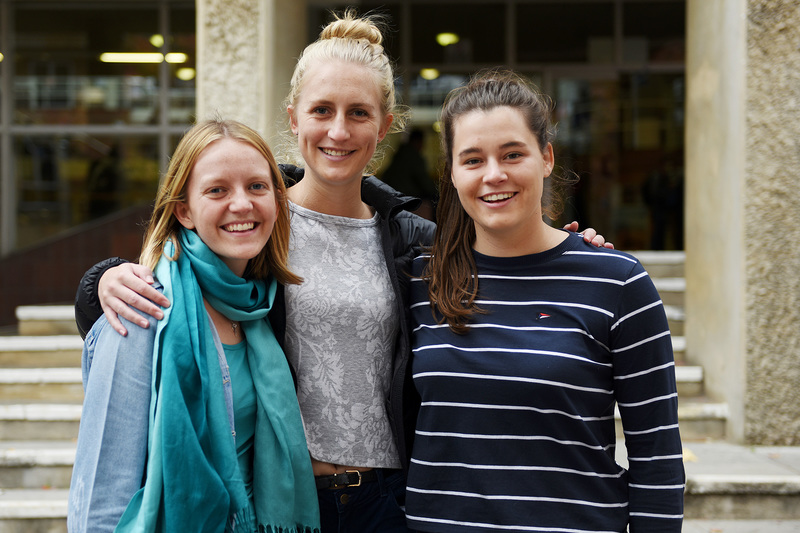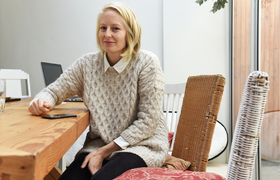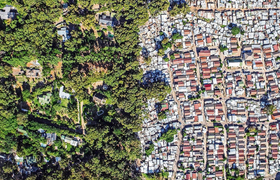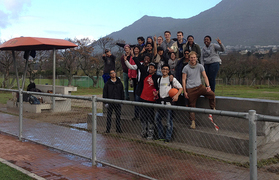Bringing water to all
29 May 2018 | Story Kate-Lyn Moore. Photo Robyn Walker. Read time 4 min.
Three architectural students investigated a means of bringing clean water to individual households in the informal settlement Imizamo Yethu in Hout Bay.
The team, comprised of then first-year students Nicky Duncan, Julia Masureik and Teegan Isola, was selected to present their findings at a conference hosted by the Faculty of Architecture Research Unit (FARU) of the University of Moratuwa in Sri Lanka at the end of 2017.
The conference, themed Design that Cares, was focused on multidisciplinary approaches to creating sustainable but meaningful built environments.
The three UCT students made their contribution to this effort in unpacking their paper “Bringing water to new heights”, which was recognised with a commended student paper award. The paper will be published in a FARU publication in July, and in a second book reserved for prize-winning papers.
“As an undergrad, it seemed totally out of reach to get into an international architectural conference. The exposure to new ways of thinking and insightful research of highly experienced people is invaluable and truly inspiring to me,” commented Duncan.
“We feel it was a wonderful credit to Jan Schabert, as a lecturer and advisor, as well as to the architecture school in general – and hopefully undergraduate students can see this as an achievable goal in the future.”
Design that cares
The paper was born out of a ‘carte blanche’ project during their first year of study. The group opted for an urban design project, based in the informal settlement of Imizamo Yethu.
“Due to UCT’s intense knowledge of Imizamo Yethu, we were able to gain an in-depth understanding of the needs which are so desperately lacking … and go forth in designing a concept to combat these difficulties.”
“Our goal was to create a plan in which the residents felt they were given an improved sense of dignity and pride towards their living environment.”
The School of Architecture, Planning and Geomatics, where the three students are based, has an ongoing relationship with Imizamo Yetho. Many student projects have been implemented in the settlement over the years, explained the team.
“This really brought our project closer to home and allowed us to set it in a very real context in our community.”
The study attempts to combat the current service ratio of 394 people to a single water source, which is the root of multiple social and environmental issues in the settlement.
“Our goal was to create a plan in which the residents felt they were given an improved sense of dignity and pride towards their living environment.”
A new outlook
The work began with the design of an urban plan that would allow for fresh water to be brought to individual dwellings. The plan encompasses a whole new outlook of the informal settlement, they said.
“We worked on creating a design that would pump borehole water by kinetic energy produced by outdoor play areas and gym facilities.”
“We worked on creating a design that would pump borehole water by kinetic energy produced by outdoor play areas and gym facilities.”
This water would then be transported to each home through a piping system, and eventually into a clip-on water supply unit, which would be attached to each dwelling. This system was designed to be implementable without uprooting current residents.
“Due to the dire conditions of this informal settlement, we thought architecture could be our personal contribution towards helping to improve these conditions, and ultimately our concept could be used to improve these conditions on a global scale.
“As a class we were lucky enough to have a lecturer with an extreme passion for international projects. Our lecturer, Jan Schabert, found the FARU conference and encouraged us to submit our concept. His continuous encouragement and belief in us was ultimately what pushed us to move forward with this paper.”
 This work is licensed under a Creative Commons Attribution-NoDerivatives 4.0 International License.
This work is licensed under a Creative Commons Attribution-NoDerivatives 4.0 International License.
Please view the republishing articles page for more information.







_0.jpg)


